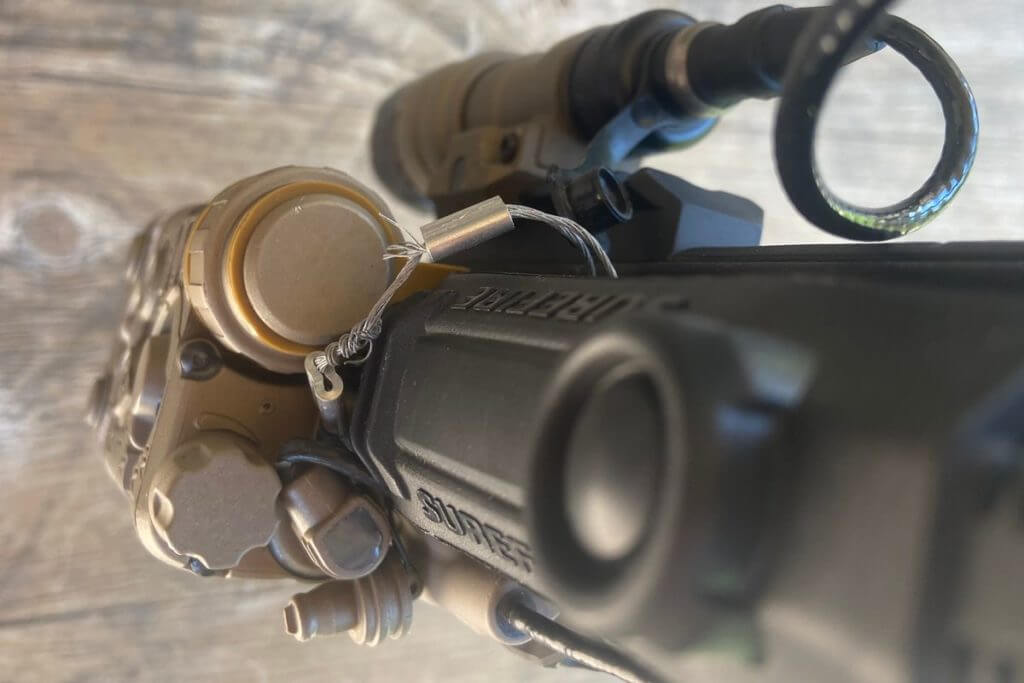
Have you ever heard the deafening thud of $13 000 hitting the cold, hard earth? I have…
During a recent day/night carbine class, two students were sharing NVG’s, unfortunately, his friend was not familiar with the mount and as he was trying to make adjustments, the whole thing dropped. As I stood, momentarily frozen by the nauseating sound, I had two thoughts; “I’m so glad that’s not mine!” and, “This is why we tie down our gear.” Or should, for that matter…
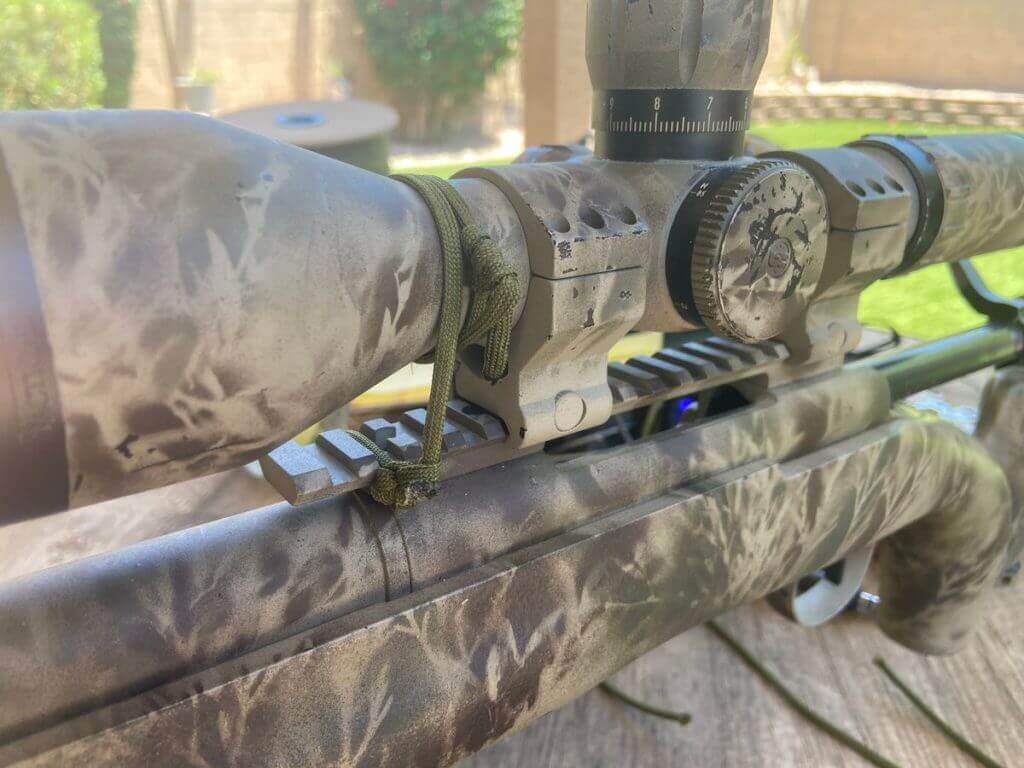
Anybody who has spent time in a military infantry unit, or had a parent who did, is probably already familiar with the concept. The term dummy cord refers to tying an essential piece of gear to something else, thus preventing it from falling or getting lost. Whilst most of us understand the military application of it, we see it as unnecessary, tedious, even excessive as civilians. However, mounts can break, accidents happen often, how secure is your gear? Having your belongings tied down might prevent adding insult to injury after taking a spill, on an already fruitless hunting trip. A couple of minutes, and a few pennies worth of supplies, could potentially save your costly effects.
What should be tied off?
Good kit is an investment, so anything that you don’t want to lose should be dummy-corded. Night vision devices, scopes, lasers, flashlights can be tied down. As a hunter, you would want to secure your GPS, compass, water bottle, binoculars. We even use it when we go kayaking, to avoid being up ..erm…Shoot creek without a paddle.
What do you need?
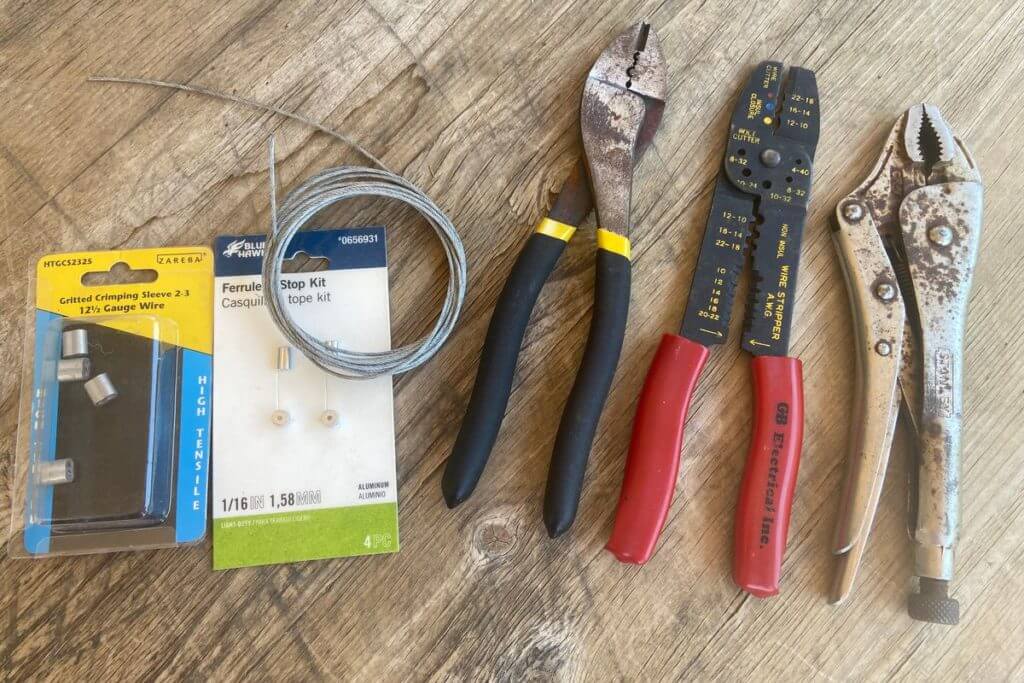
Gear can be tied down with either galvanized steel cable and ferrules, 550 cord (paracord), zip ties, rubber bands, or commercial lanyards. The preferred method for securing accessories to a firearm is steel cable, as the material is heat resistant, and won’t degrade with use as the barrel heats up. Using wire cable also does not involve tying knots.
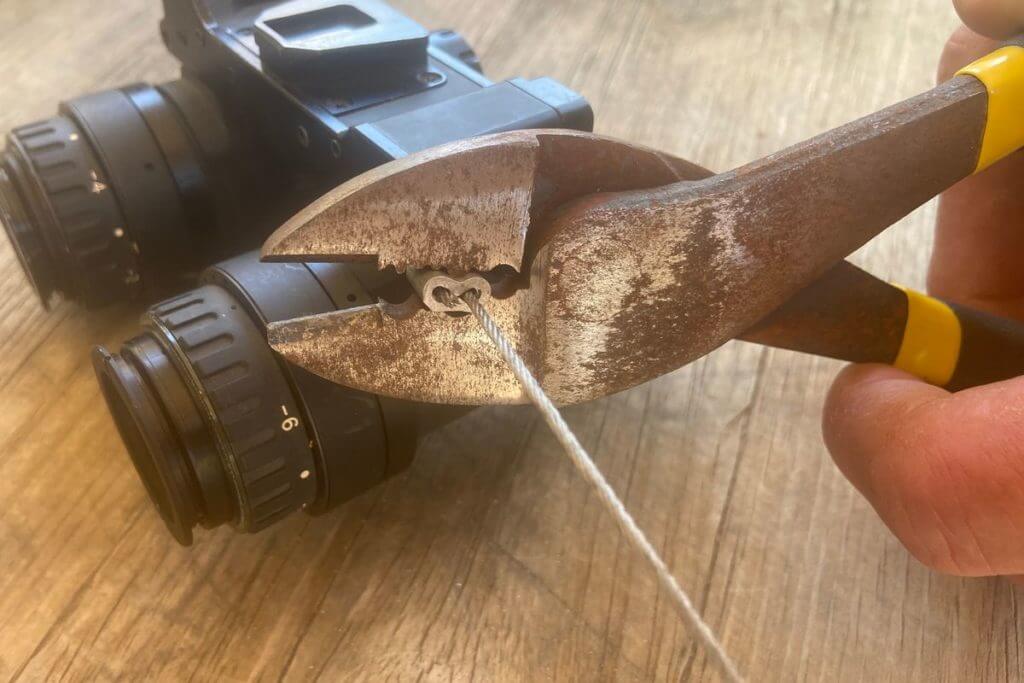
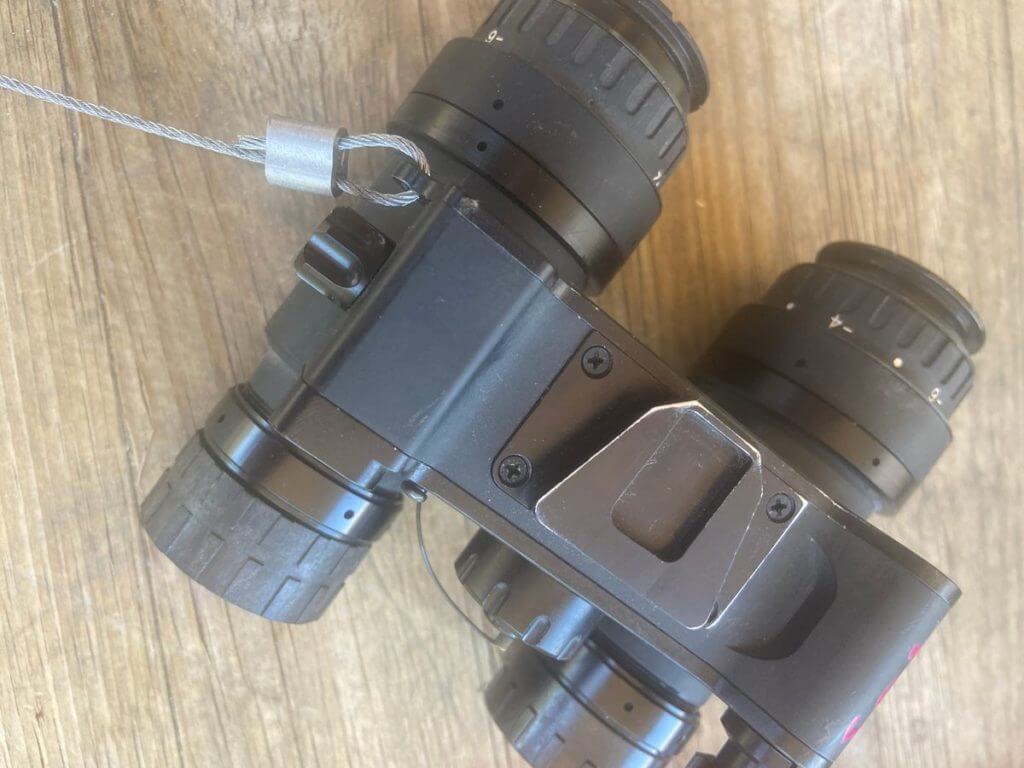
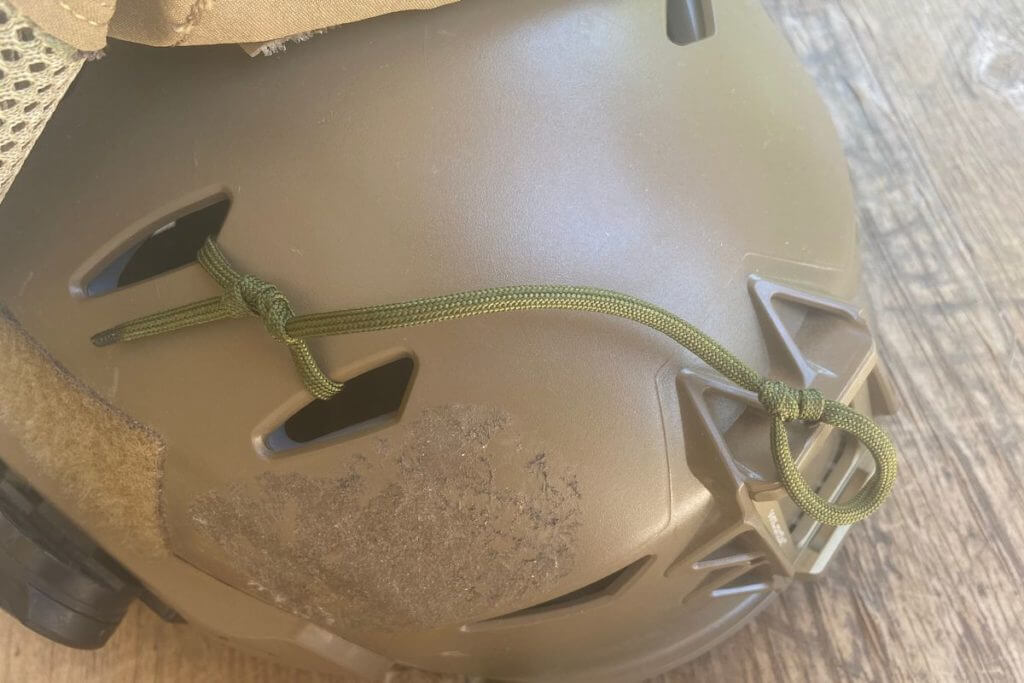
How you secure the items to each other will depend on its purpose and use. Consider using lockable S-Biner, for items that need to be removed for storage or travel, this will prevent shooters from having to cut ties and having to retie at a later stage. These S-Biner have a micro lock system that locks both gates with a simple twist.
What if there are no anchor points?
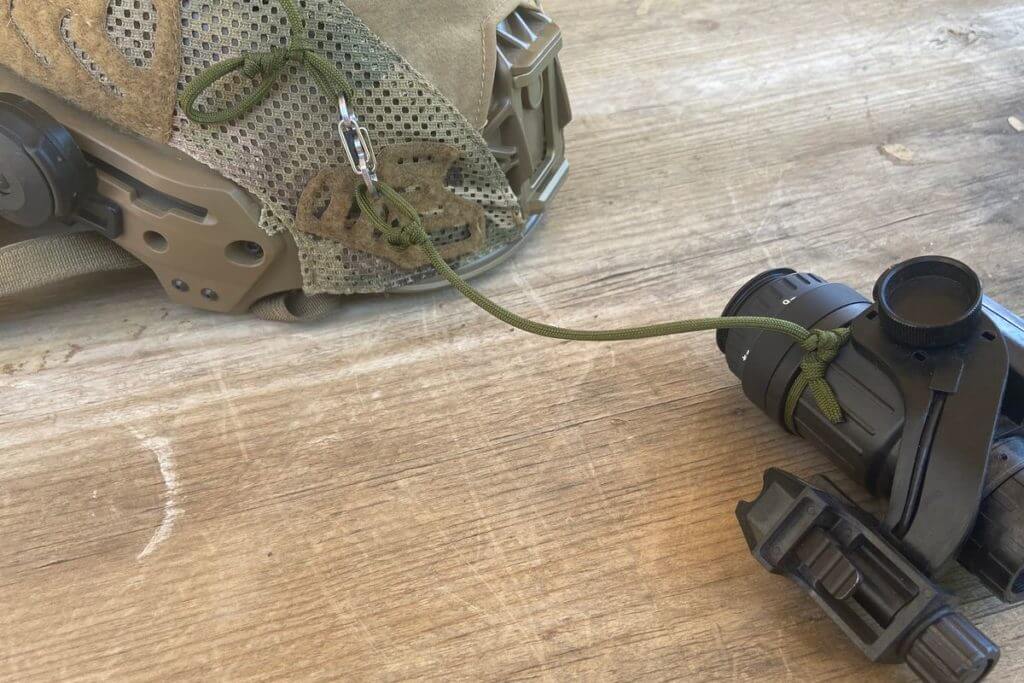
Most firearms accessories have anchor points, which simplifies the process greatly. However, if it does not, like a scope, it can be secured by tying a loop around the tube and another around the rail, using a bowline knot. I prefer using a end-of-line Prusik knot with an overhand finishing knot directly under the locking bar. It is imperative to ensure that tie-downs do not interfere with any moving parts either the firearm or optic. As habit I recommend running all tie off points on the opposite side of the ejection port.
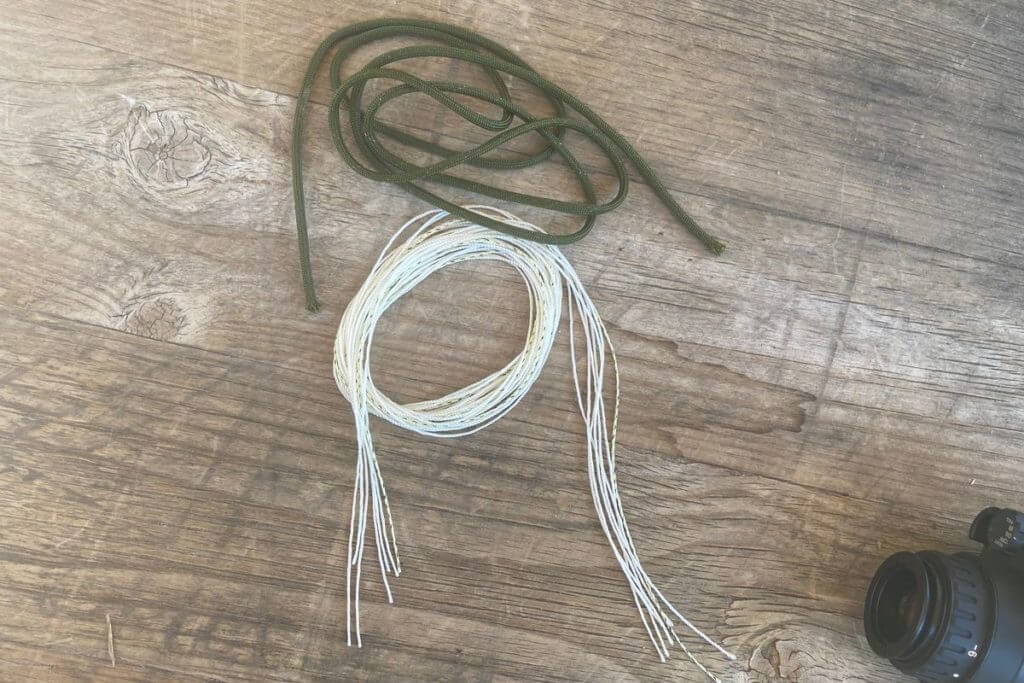
This is where 550 cord is preferable. 550 cord or Paracord (because it was once used as lines for Army parachutes) and has a tensile strength of 550lbs. By removing (or gutting) the 7 internal strands of braided nylon, you’re left with the outer, stretchable sheath that works very much like Chinese finger cuffs, further ensuring that your knots will not come undone.
If convenience is key
There are several commercial alternatives available that make tying down gear easier, and the convenience comes at a price of course. The Blackhawk Pistol Lanyard is a sturdy option for those who prefer an out-of-the-box solution. The Combat Ready Tactical Lanyard System was specifically made with the earlier PVS14 in mind, but can realistically be used on other accessories, the quick release buckle is a convenient touch.
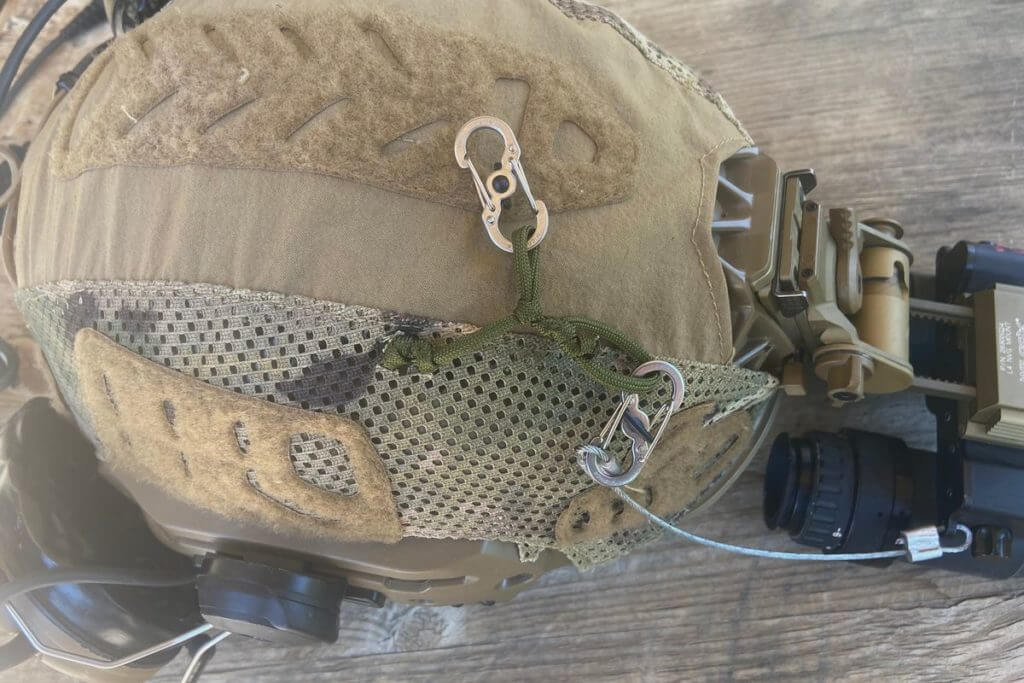
Being able to tie down your belongings is crucial for gear management. When hiking/hunting or camping, being able to find a tool without rummaging through your backpack in the dark will greatly improve the experience. Key pieces of equipment can be securely attached for easy access. With summer and camping trips on our doorstep, tying off personal effects is a great punishment parenting tool for young campers who are prone to lose headlamps, and provides hours of torture entertainment on those long car rides home.